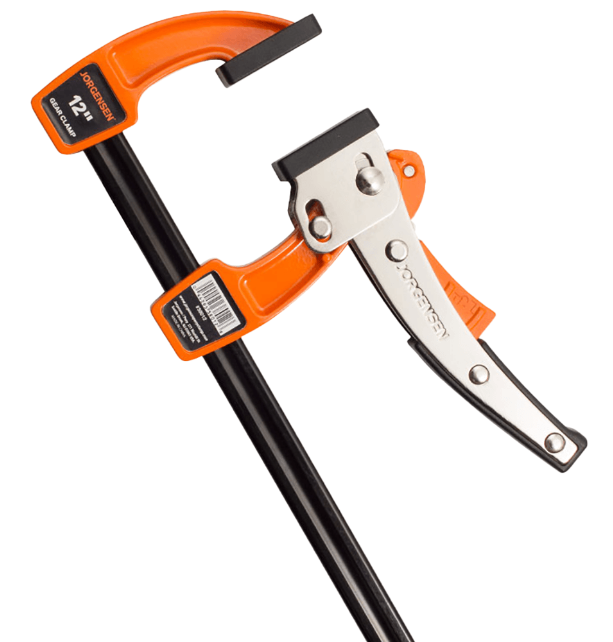Introduction
Woodworking is a craft that requires precision and stability. One tool that plays a crucial role in achieving these qualities is the clamp. Whether you are building a simple shelf or a complex piece of furniture, having the right clamps in your toolbox can make all the difference in the outcome of your project.
Why clamps are important for woodworking
Clamps provide the necessary pressure to hold pieces of wood together while glue dries or when joining parts with screws or nails. They prevent movement and ensure a tight bond, resulting in strong and durable joints. Without clamps, woodworking projects can become a frustrating exercise in imprecision and instability.
The different types of clamps available
There are several types of clamps available, each designed for specific woodworking tasks. Let’s take a closer look at some of the most common ones:

- C-clamps
- Bar clamps
- Parallel clamps
- Quick-grip clamps
- Spring clamps
- Pipe clamps
- Band clamps
- Toggle clamps
- Hand screw clamps
- Pinch dog clamps
C-clamps are versatile and can be used for a wide range of woodworking tasks. Bar clamps are ideal for larger projects, as they provide greater stability and pressure. Parallel clamps are known for their accuracy and parallel clamping action. Quick-grip clamps are convenient for quick and easy clamping. Spring clamps are handy for smaller projects or when temporary clamping is required. Pipe clamps are commonly used for edge gluing and panel glue-ups. Band clamps are perfect for irregularly-shaped objects. Toggle clamps are useful for holding workpieces in place during cutting or drilling. Hand screw clamps are great for delicate or intricate work. Pinch dog clamps are designed for holding boards at odd angles.
How to choose the right clamps for your woodworking projects
When selecting clamps for your woodworking projects, consider the size and scale of your work, the type of joints you will be making, and the amount of pressure required. For smaller projects, spring clamps or quick-grip clamps may be sufficient, while larger projects may require bar clamps or parallel clamps. It is also important to choose clamps made from high-quality materials to ensure durability and reliability.
Where to buy clamps and what to consider when purchasing
Clamps can be purchased from various sources, including hardware stores, online retailers, and specialized woodworking suppliers such as Woodworker Express (https://woodworkerexpress.com). When purchasing clamps, consider factors such as price, quality, and customer reviews. It is also worth checking if the clamps come with any warranties or guarantees.
Tips and techniques for using clamps effectively
Using clamps effectively requires proper setup and technique. Here are a few tips to keep in mind:
- Always ensure that surfaces to be clamped are clean and free from debris or glue residue.
- Apply even pressure across the entire clamping surface.
- Use protective pads or blocks to prevent damage to wood surfaces.
- Avoid over-tightening, as it can distort the wood or weaken the joint.
- Consider using cauls or spacer blocks to distribute pressure evenly.
- Experiment with different clamping configurations to achieve the desired result.
Common mistakes to avoid when using clamps
While clamps are essential tools, there are some common mistakes that beginners should be aware of to ensure successful woodworking projects:
- Using too few clamps, resulting in uneven pressure and weak joints.
- Not aligning the workpieces properly before clamping, leading to misalignment.
- Using clamps that are not suitable for the specific task or project.
- Not applying enough pressure, resulting in gaps or weak bonds.
- Leaving glue to dry for too long before clamping, causing it to lose its adhesive properties.
Conclusion
Clamps are an essential part of any woodworking toolbox. They provide the necessary pressure and stability to ensure precise and strong joints. By understanding the different types of clamps available and how to choose the right ones for your projects, you can enhance the quality and professionalism of your woodworking. Remember to use clamps effectively and avoid common mistakes to achieve outstanding results in your woodworking endeavors.












 Do Not Sell My Personal Information
Do Not Sell My Personal Information